Frequently Requested Management & Leadership Training Toggle On Content Below to Expand
1) The Lincoln Experience - Leadership Offsite Training
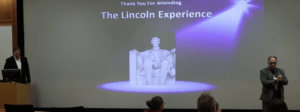
If your organization or team is looking for sound, practical leadership tips and tools that can be applied immediately, you won’t want to miss our training on The Lincoln Experience – Leadership Lessons om Lincoln. Click here for a 1 minute video preview.
It is available as a live Training or Full Day Workshop. Perfect for a unique, educational and engaging executive off-site.
It is presented by Lee Hubert, founder of Manager Success LLC and Steven K. Rogstad, author, speaker, instructor and scholar of Abraham Lincoln. He is the principal of Kenson Enterprises LLC Racine, Wisconsin and Co-creator of The Lincoln Experience – Leadership Offsite Training.
We sometimes think we have things so rough.
Our 16th President was probably one of the most revered and the most hated figures by his contemporaries. Abraham Lincoln was elected by what was then the lowest plurality in an American election to date.
-
The country was disintegrating, military leaders and cabinet members questioned his leadership, and there were numerous threats on his life.
-
In spite of it all, Lincoln’s approach to managing people and circumstances fostered innovation and engagement.
-
Lincoln developed and used his amazing talent for Coaching and public Speaking.
-
He kept people in his organization engaged while delivering at the most challenging news at often the most challenging of times.
-
His methods for providing feedback to wayward subordinates would be the envy of any leader anywhere.
-
We would do well to learn from his experiences the next time we are frustrated because something that was supposed to happen didn’t or a colleague let us down.
For more info click here and reference #1 – The Lincoln Experience
2) Behind the Manager's Closed Door - Manager Workshop
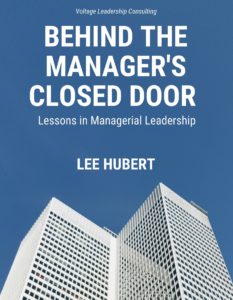
Click here for Behind the Manager’s Closed Door – Lessons in Managerial Leadership is the insider’s view of practical tips, tools and best practices from many years in HR coaching and counseling leaders of all types.
This unique training is available as a multi-day, whole day or half day workshop. For scheduling and details, just replay back from our website contact page.
The companion e-book (Above) is available on Amazon It covers:
-
What’s the word on the street out there?
-
What really matters to your Team and why?
-
What to take behind the closed door in 1:1 mode?
It is a primer on how to grow people in order to help make them successful
It equips leaders with practical tips and tools on how to:
-
Apply the success equation
-
Build the trust bridge
-
Erase drama
-
Push people appropriately
-
Coach people up
-
Grow people
-
Resolve conflict
BONUS – (Click here) to Listen free to the Voltage Leadership radio show Behind the Manager’s Closed Door with Jeff Smith & Lee Hubert
For info click here and reference #2 – Behind the Manager’s Closed Door, The Manager Workshop
3) On-boarding New Hires for Retention
On-boarding New Hires for Retention
This training equips all participants with tips and tools that they apply immediately to ensure that new hires have an excellent ramp up experience. Thoughtful on-boarding helps to maximize retention and protect the investment the organization makes in new staff.
Drawing on first hand experiences as onboarding coach– for key hires all over the USA, participants will learn what:
NOT TO DO and definitely what TO DO.
Given the average cost of new hire turn-over attending this training is a no-brainer as it will pay for itself many times over.
When the economy is strong, or not so strong, it’s time to pay closer attention.
Learning objectives include:
> What to focus on in the first 30-60-90 days
> How to avoid the biggest mistakes most organizations make
> When to meet with hires and how frequently
> The biggest communication ‘must-haves’ in the ramp up process
For info click here and reference #3 – On-boarding New Hires for Retention
4) Delivering Developmental Feedback
DELIVERING DEVELOPMENTAL FEEDBACK

Having tough conversations regarding developmental feedback can be difficult. In management practice we frequently get asked about how to have the difficult conversation without people over reacting, getting defensive, shutting down or freaking out. They require forethought, preparation, honesty, integrity, and a little courage.
This training equips all participants with tips and tools to ensure they are prepared to handle feedback situation professional and cordially. Drawing on firsthand experiences from administering leadership multi-rater assessments all over the USA, participants will learn Do’s and Don’ts that they can apply immediately.
Learning objectives include:
> What to focus on
> Roles and responsibilities
> How to avoid the biggest mistakes most organizations make
> When to meet in follow up mode and how frequently
It’s about the relationship and behavior, not the person.
We want the feedback to be balanced in order to focus on being effective. Wise management understands that when the time comes to deliver challenging feedback, it is best to have already made some positive deposits into that personal psychological account.
Participants are taught the iPUSH model:
Step 1 i = Intention, succeeding with intentionality
Step 2 P = Problem(s) to resolve
Step 3 U = Understanding problems fully before acting
Step 4 S = Setting the right actions in motion at the right time
Step 5 H = Hitting the finish line strong
It is the responsibility of the feedback giver to thoroughly understand all the factual objective data available before rendering a conclusion and offering feedback. Then together set SMARTER goals
Set SMARTER Goals and the Manage Habits and Routines
Specific: Who? what? when? where? why?
Measurable: How will I know when it is accomplished?
Actionable: Can objectives pertaining to the goal be carried out? How?
Realistic: How does this goal help you to meet the overall objective?
Time Bound: Completed milestones by end of what time period?
Existing Habit: It is easier to change an existing habit than to create a new one.
Routine: Energize your routine
Feedback is a gift!
It is sometimes hard to hear but almost always valuable to the recipient. It is also what most managers struggle to deliver. They may either shy away from it, kick the can down the street, or punt it to a new manager.
Other times it is delivered with a command and control type authoritarianism that shuts people down. Where is that balancing point for all managers to find that enable them to be fully themselves, not leave anything unsaid and do so in such a way that preserves the relationship?
It is important to establish trust between managers and employees in order to fully appreciate the gift of giving and receiving feedback.
For info click here and reference #4 – Delivering Developmental Feedback
5) DiSC - Understanding Behavior & Motivation
Understanding Who is on Your Team

The DiSC assessment is relatively low cost, easy to understand and easy to administer. It provides valuable insights into two main areas of personality. The first is observable behavior and the second is motivation. It takes about 20 minutes to complete and a comprehensive report is emailed immediately upon completion.
This report will give you an understanding of your behavioral styles. Additionally, the report suggests ways you can develop in specific areas in order to gain higher levels of effectiveness when working with your team and others. This assessment can also provide a window of understanding for the leaders you report to, creating a clearer understanding of your perspective and communication style.
It provides a “common language” for Teams and promotes common understanding. DiSC is useful in on-boarding new hires, understating how to manage up to the boss, understanding who is on a particular Team and how to play to those personality strengths. It is also extremely useful in helping to navigate conflict between individuals or groups of people.
We frequently compose a Team DiSC Grid that shows which natural and adaptive personalities are on the Team and what motivates them to action. This is good insight that gets applied immediately!
The individual report also contains a developmental action plan that helps people understand and address potentially limiting behaviors,(a good thing!)
We have the capability to run side by side reports. These come in handy when intervening on Teams with conflict as it provides neutral / non-judgmental insight to both leadership and teammates.
DiSC is often our first step and foundational to Team building and subsequent cascading of leadership styles.
For info click here and reference #5 – DiSC- Understanding Behavior & Motivation
6) Success Factors - Getting Unstuck
Jump Start / Re-boot Your Year for Success
 Success
Success
What does success mean to you and your Team?
What does your team need to focus on that it isn’t?
What must have happened in order to call your year a success?
In this highly interactive training we fast forward to the end of your current or next fiscal year and drill down to get the answers to these questions.
The Team will discover and prioritize near term / longer term deliverables that would need to happen in order to call your current year or fiscal year a success.
It is applicable to all Teams from the C-suite to the front lines, who do a good job of knowing what to do, but may feel stuck in getting things implemented.
If it feels like your Team may have lost some of its effectiveness or is “just going through the motions,” this training may help renew its energy. It is especially valuable for new Team formation or re-formation of existing Teams that may have lost some of their focus.
For info click here and reference #6 Success Factors – Getting Un-stuck
7) Recognition as a Retention Strategy
Recognition as a Retention Strategy
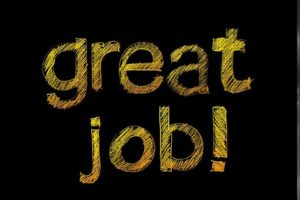
How to Keep Your Star Performers
You get the knock on the door, “Got a minute”?
One of your star performers walks in and starts telling you that they are leaving the organization. Ouch, this was quite unexpected and this person is an integral part of the Team.
What should you do next? How can you prevent this of type of “bad turnover” from happening again?
In this training Leaders will learn practical strategies, tips and tools to improve employee Retention by enhancing employee Recognition.
For answers to the questions above and a deeper dive into Recognition and Retention Strategies please click this link to our radios program on Retention-and-recognition-strategies
Recognition IS a Retention Strategy
The Big “3” F-R-C
-
Feedback – “Retained” employees want and need consistent honest feedback about how they are doing
-
Recognition – Ignoring star performers paves the way for them to be recognized by another employer
-
Caring – “Retained” employees feel a real sense of integrity from their reporting relationship
How to practice Recognition as a Retention Strategy
-
Find out what employees want from their culture. Your job as Leader is to create space for the retention discussion to consistently happen! Be Inquisitive, get behind the Manager’s closed door and understand their satisfiers and dissatisfiers
-
Don’t get hung up on trying to have the “perfect” retention program. Don’t delay on starting to recognize top performers and keep it simple. Even with little or no budget just do it.
-
Avoid the “Iceberg of Ignorance” – Ask staff and teammates, “what should we be doing differently”?
-
Some data suggest that only 4% of “true” organizational problems are understood at the “C” level while 75 – 100% of the front-line managers and staff live with them every day!
-
Practice Re-Recruiting – Treat them as if you wanted to join your Team. What would you do differently?
Recognition ideas:
-
Lunch with the boss – Make it about them, not a defector grill session
-
Don’t forget their birthday – a simple thing true, but many miss this simple thing
-
Peer to peer recognition – Build esprit ‘d corp by setting the example to follow
-
Hand written notes to the employee’s home (with gift card / dinner, etc.)
-
The Travelling Trophy -Simple, fun and never goes out of style (take their picture with it)
-
Give Time Back – Time off to let them participate in causes they care deeply about
-
March Madness – For fun only, tap the passion and excitement of the road to the final four
-
Let vacation be vacation – And when they return, let them adjust a little as they “re-enter”
-
Work from Home Day – Trust them to do what they need to. Give them the freedom to be who they are.
BONUS – (Click here) to Listen free to the Voltage Leadership radio show Recognition as a Retention Strategy with Jeff Smith & Lee Hubert
For info click here and reference #7 – Recognition as a Retention Strategy – How to Keep Your Star Performers
8) Communication - Soft Skills
The quality of our communication impacts the quality of the results we achieve
If we were to privately ask staff and colleagues at your organization, “How do people experience you as Leader what would they say?
What is it like to be one of your direct reports? Have recent 360 results challenged you to think differently about how people experience you?
If this has your attention, please consider this excellent training that builds the leader’s communication skills up for success!
Elements of this training include: All forms of communication
-
Being present
-
All forms of listening
-
One-on-one meetings
-
Stand up / Departmental meetings/ All hands
-
Phone, email, and social media
-
The “Press Conference”
-
Video training (Optional)
It incorporates default DiSC values – behaviors / motivation and constructs a personalized plan to build your managerial brand.
Many times, aspiring leaders get caught in the tactical spin cycle of the transactional, (trying to do too many things at once.) This can lead to reinforcing the Limiting Behaviors that may stymie upward mobility. Interactions with others may become strained or strained as the spin cycle continues. Frustration and more limiting behaviors are often the result.
This training teaches how to compartmentalize events to maximize communication for success.
For info click here and reference #8 – Communication – Soft Skills
9) How to Remove Drama
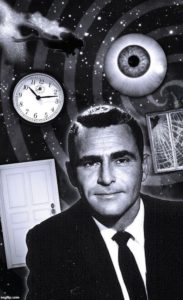

Drama (dra·ma)
definition
noun. an exciting, emotional, or unexpected series of events or set of circumstances
verb. to dramatize the ability to make peers, colleagues and management staff immediately crazier than normal.
Drama sucks the energy out of teams and replaces it with productivity killing distraction. Left unchecked, productive people may leave. Knowing how to proactively end drama will help retain star and rising star performers.
This training teaches leaders how to eliminate drama and restore the team’s morale to build them up for success! It is frequently combined with supplemental coaching to keep leaders on track.
Those stuck in patterns of dysfunctional workplace behavior tend to have a negative outlook and dwell on what they don’t want vs. what they do want. This training helps leaders identify drama and provides tools for dealing with it in a professional way. It helps to reduce drama and keep productive people on your Team!
If you are interested in making the shift to increased morale and reduced drama at work, please consider this training.
BONUS – (Click here) to listen to the Voltage Leadership radio show free – Making ‘Shift’ Happen: Escaping the Dreaded Drama Triangle (DDT) with TED* (*The Empowerment Dynamic) ® with Jeff Smith & Lee Hubert
For info click here and reference #9 – How to Remove Drama from the Workforce
10) How to Resolve Conflict
 Resolving Conflict
Resolving Conflict
A “Join-Up” session is a facilitated conflict resolution involving two people or a small group of people. It got its name from my past HR practice where we attempted to get people who were in conflict to move past it and to “join up” with the rest of the team. It integrates “story-telling” with foundational elements of Team success.
The Join-Up is a form of intervention that is typically utilized in circumstances where communication has ceased to be present for quite some time and the people involved may be overtly expressing frustration as a result. This overt expression often has a decompensating effect on the Team, colleagues and end users of the work product. It may also have been tolerated for far too long as addressing it can feel quite uncomfortable.
This training teaches leaders how to facilitate conflict resolution sessions that:
-
Break any Toxic Communication Patterns present
-
Break an Impasse affecting the Team or Business
-
Establish New Communication Channel
-
Re-Set Expectations for Behaviors and Accountabilities
-
Eliminate Counter-Productive Drama for the team
-
Maintain Focus on Team Mission & Vision
-
Communicate Expectations of Confidentiality
-
Set the Timetable for Next Steps and Follow up with Leader
The training shows how to identify areas of mutual concern as opportunities for improvement and explores the right developmental goals to work on along with the best ways for the manager to interface with the players as their accountability partner.
At first, it is best to have the trained Facilitator and Manager present in the session. Once up to speed, the manager may facilitate future Join-Up sessions as needed. (See eBook Behind the Manager’s Closed Door – Lessons in Managerial Leadership Join Up worksheet in Appendix 7 and sample Join Up script in Appendix 8.)
Foe info click here and reference #10 – How to Resolve Conflict
11) Leading a Diverse Workplace with Multiple Generations
For the first time in history we have 5-6 Generations at work

Multiple Generations in the Workplace is a fun and highly interactive training that engages all people in the room.
For the first time in history we have 5-6 Generations at work
-
Traditional generation (born pre-1945) WWII / Depression Era
-
Baby Boomers (born 1946 – 1964) Post WWII crowd
-
Generation X (born 1965 – 1980) Latch Key Kids
-
Generation Y (1981 – 1995) Digital Natives
-
Generation Z (1996 – 2009) Millenials
-
Generation Alpha (2010 – 2024), children of Millenials
Learning objectives are to understand and apply the answers to the questions below:
> What do generations at work really think of reach other?
> What part of that is mythology based on assumptions vs actual experience?
> What guidance is available for Managers and Employees of different generations?
> How can we all interface at work to tap each other’s strengths and minimize misunderstanding?
> What are some of the false assumptions made about all Generations including Y and Z?
As an example, younger employees and older employees can help each other learn new ideas. Since millennials are Gen – Y digital natives, the assumption is that they have more to offer than older generations. While that may be true in the tech area, it is not so true in other areas of work. Seasoned employees have more they can teach to more junior employees about business intuition.
BONUS –(Click here) to listen to the Voltage Leadership radio show free–Voltage Leadership CEO Jeff Smith (Gen-X) and Principal Consultant Lee Hubert (Boomer) discuss “Generational Reality vs Generational Mythology”
BONUS II –(Click here) to listen to the Voltage Leadership radio show free–Voltage Leadership Principal Consultant Lee Hubert (Boomer) and Diane Nguyen (Millennial) Program Manager at Voltage Leadership discuss “Millennial Mythology”
For info click here and reference #11 – Leading a Diverse Workplace with Multiple Generations
12) How to Manage Time and Energy
MANAGE BOTH TIME + ENERGY

In order to show up at our best, helping things go right is the biggest part of the work, and that’s where we need to manage both our time and energy. My experience has been that the resolution to most management challenges are linked to how well we instill and maintain the balance between these four variables: time, energy, people and communication.
Time: Time is fixed. We all get the same allocation of time. How we invest it and with whom determines our results.
Energy: Energy flexes. Leaders are not all equal with regard to the level of energy they bring to their jobs. In order to consistently show up at our best, we must recognize the necessity to manage both our time and our energy levels.
There are two steps you needed to take to install boundaries. The first is to recognize what they need to be for you to consistently show up at your best. The second step is once you have boundaries, let other people know what they are. If you are in a leadership role, others will watch and taking their cues from you whether it is apparent or not.
This is a highly interactive training on time and energy management will teach on how to design time for the highest levels of personal and team effectiveness including:
-
How to use the design time to manage desired outcomes for the day, week, month and year
-
Determine your peak times of effectiveness throughout your day, and how to apply this to increase your productivity
-
Taming the Distraction Dragon – Identify key strategies for eliminating distractions in order to focus in what matters
-
Determine which things you should start doing and which ones you should stop doing
-
Identify, remove or delegate lower priorities from the priority queue
-
How to use Power Sessions to triple your productivity
-
Re-setting the calendar to take time off and re-allocate to things that matter
-
Using personality traits to optimize time, energy and resources
-
Getting and staying physical before getting fiscal
High-capacity professionals are clear about what else is important to them other than work and will make certain those items go on their calendars first. This training is highly recommend for those who may feel habitually overwhelmed and and can’t seem to find the time to search for a solution!
For info click here and reference #12 – How to Manage Your Time and Your Energy to Show up at Your Best
13) How to Build Trust On Teams
THE TRUST EQUATION

HOW TO BUILD TRUST ON TEAMS
It is said that trust is a lot like oxygen. Everybody knows when it’s present and everybody feels when it’s not. It is also the main reason professional relationships fail. Trust is interacting with others in ways that give them confidence in one’s future intentions.
This highly interactive training equips leaders with an understanding of the drivers of Trust on Teams. This includes tools for building Trust and tips on avoiding Trust Breakers. If Trust or lack thereof is a potential dilemma for your Team, please consider Trust Builders and Trust Breakers – How to Build Trust On Teams.
In this training Leaders will learn how to apply:
The Wheel of Trust
This powerful communication tool has multiple applications. You will learn the 6 elements of trust, which include Sincerity, Involvement, Competence, Standards, Reliability, and Time.
Leaders will learn how to use this tool to:
-
Communicate more effectively with internal & external stakeholders
-
Communicate your preferences to new hires and existing team members that will lead to higher levels of engagement and motivation
-
Identify where trust has broken down and relationships have stalled or gotten stuck
-
Create collaborative teams that move swiftly through project development and execution
-
Discover what might be holding you back from reaching your potential
-
Rebuild trust when it’s broken or damaged
Leaders will also learn how to navigate Trust Makers and Trust Breakers
Trust Makers
+ Making the Effort
+ Honesty
+ Clarity of Roles and Responsibilities
+ Workplace Culture / Relationships
+ Integrity
+ Modeling Behaviors
Trust Breakers:
– Breaking Your Promises
– Serving Your Own Self Interest
– Acting Inconsistently
– Avoiding Issues
– Making Assumptions
– Doubting Others
For info click here and reference #13 – Trust Builders and Trust Breakers – How to Build Trust On Teams
14) How to Conduct Reasonable Suspicion Investigations
How to Conduct Reasonable Suspicion Investigations
 Conducting a Reasonable Suspicion (RS), investigation is a touchy subject given some of the changes to states regulations concerning marijuana.
Conducting a Reasonable Suspicion (RS), investigation is a touchy subject given some of the changes to states regulations concerning marijuana.
In state and local laws, not to mention societal attitudes. A prime example is the decriminalization of marijuana in several states such as Colorado, Alaska, California, Illinois, Maine, Massachusetts, Michigan, Nevada, Oregon, Vermont and Washington — have adopted the most expansive laws legalizing marijuana for recreational use. Illinois became the second most-populous state to legalize recreational marijuana. Vermont earlier became the first state to legalize marijuana for recreational use through the legislative process, rather than via a ballot measure. Vermont’s law allows for adults age 21 and over to grow and possess small amounts of cannabis. However, it does not permit the sale of non medical cannabis. Some other state laws similarly decriminalized marijuana but did not initially legalize retail sales.
Most other states allow for limited use of medical marijuana under certain circumstances. Some medical marijuana laws are broader than others, with types of medical conditions that allow for treatment varying from state to state. Louisiana, West Virginia and a few other states allow only for cannabis-infused products, such as oils or pills. * From Governing.com/gov/data
A number of complex issue have to be navigated to keep the workplace safe and complaint.
Click Here to Engage with us if you need help
The big story is that you must understand what to do, when and why. And, this is where we can help. Our team can train your people as trainer if need, (ie T3 = Train the Trainer) to help your company get the right information in the right hands quickly. We speak all over the USA at offsites, meetings or at client sites as requested.
Step 1: Write a Substance Use Policy…Not a Substance Abuse Policy.
If you don’t have a policy, write one and do it now. Your leaders need to be trained and know the policy thoroughly. If you are challenged, the first thing that is often brought up is, “did you follow and apply your own policy evenly?” What’s that? You don’t have a written and understood policy? Ouch. Then how do you know what to do from one person to the next? If you need help composing a policy, contact us.
Remember, we are not MD physicians and we are not diagnosing anybody. We are pointing out the prohibited behaviors in the workplace. This means never have “well-intentioned” managers tell somebody, “Hey man, I think you might be an addict or an alcoholic and I am just trying to help!” They have just ‘labelled’ that person and opened your company up to exposure under The Americans with Disabilities Act Amendments Act (ADAAA) or other such regulations. A good rule of thumb is to follow the FHWA model. It helps clarify the number of drugs tested for, metabolite cut off levels, etc. It requires a good faith effort and proper documentation of firsthand observations.
Step 2: Provide Training and Education for all regarding Your Substance Use Policy.
This means provide good training and documentation of that training to all front-line Supervisors and Leadership. Depending on the scope of your business, you may need to train leaders and provide education to rank and file workers on what impacts them. For example, if they perform what the Feds call ’Safety Sensitive” jobs, they are likely to be covered under several administrative regulations. These might be Federal Highway Administration (FWHA), Federal Railroad Admin (FRA), Federal Aviation Admin. (FAA) etc.
Each of these agencies has their own prescribed testing protocols interpretation of results, random testing and record keeping requirements. If you have questions on this, ask us for help (click here).
The goal of RS is to rule out possible use or impact of substance on the behavior that they observe firsthand. In general, it should take two management people to pull the trigger on sending worker for a RS breath alcohol or urine drug test. If there is only one management person available, they should make a good faith effort to document their observations and send the subject to testing. A simple easy to follow documentation form is provided for checking off what is observed, the date, time, employee facts, and sign off by the manager(s). This addressed the vital needed for “probable cause” before sending a person to RS testing.
In general, a worker who has been placed in Reasonable Suspicion status is suspended from their job pending investigation of the facts. If the MRO adjudicated them negative, they are made whole, back pay and all. A big question is: If they come back negative, have we done anything wrong? The answer is no, providing we have solid documentation of why the person was sent to rule out possible banned behaviors in the workplace. Remember that behavior is what we are concerned about, not diagnosing anybody. (SAMSHA)
Step 3: Engage with recognized and professional Breath Alcohol & Urine Collection sites
Collecting a Breath Alcohol sample or Urine sample for RS testing is a tightly controlled process. It must be done by trained technicians following chain of custody protocols. This is the “glue” in the process that ensure testing integrity.
Step 4: Engage with recognized Medical Review Officer (MRO)
This is the medical doctor on whose medical authority the determination of a positive or negative result is based. In certain circumstances they may require a “split” sample and order a retest of a urine specimen to validate a result. Other times they might suspect tampering or adulteration. These are the medical professionals who make the determination that we abide by. Their word is final and keeps us out of potential trouble by making some determination ourselves.
For info click here and reference #14 – How to Conduct Reasonable Suspicion Investigations
Empty section. Edit page to add content here.


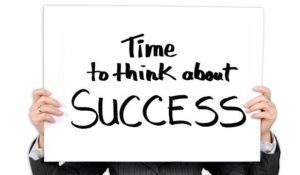

 Resolving Conflict
Resolving Conflict  Conducting a Reasonable Suspicion (RS), investigation is a touchy subject given some of the changes to states regulations concerning marijuana.
Conducting a Reasonable Suspicion (RS), investigation is a touchy subject given some of the changes to states regulations concerning marijuana.